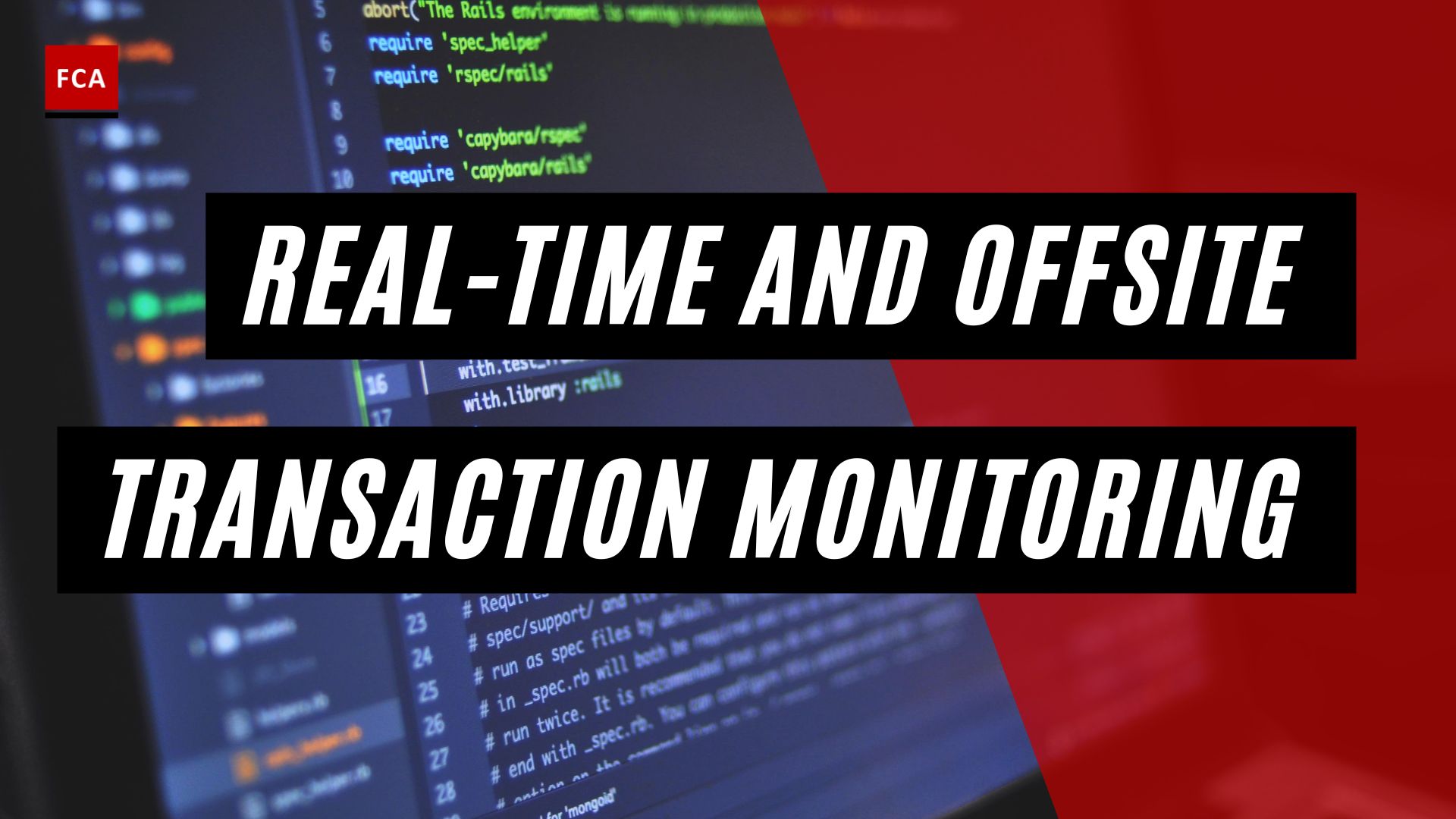Mobile Payment Security: An Overview
As the popularity of mobile payments continues to rise, ensuring the security of these transactions becomes paramount. With the global mobile payment revenue projected to reach $12.06 trillion by 2027 and the number of smartphone users expected to surpass 7.7 billion by 2028, it is evident that mobile payments have become a significant part of the digital economy (Tripwire, CardConnect).
Rise of Mobile Payments
The rise of mobile payments can be attributed to the convenience and accessibility they offer. With just a few taps on their smartphones, users can make purchases, transfer funds, and engage in financial transactions from anywhere, at any time. The widespread adoption of mobile payment apps and digital wallets has transformed the way people interact with money and conduct transactions.
Importance of Security in Mobile Payments
Given the sensitive nature of financial transactions, security is of utmost importance in mobile payments. Protecting customer data, preventing fraud, and ensuring the privacy of personal and financial information are key objectives for both users and payment service providers.
To mitigate the risks associated with mobile payments, various security measures have been implemented. These measures focus on safeguarding data, authenticating users, and preventing unauthorized access or fraudulent activities.
In the following sections, we will explore key security measures for mobile payments, industry standards, and best practices to ensure safe and secure mobile payment transactions. By understanding and implementing these measures, users can have confidence in the security of their mobile payment activities.
Keep reading to learn about essential security measures such as tokenization, encryption, and two-factor authentication (2FA) that help protect mobile payment transactions against unauthorized access and fraud.
Key Security Measures for Mobile Payments
When it comes to mobile payments, ensuring the security of transactions is of paramount importance. Several key security measures are employed to protect sensitive data and reduce the risk of fraudulent activities. In this section, we will explore three essential security measures for mobile payments: tokenization, encryption, and two-factor authentication (2FA).
Tokenization in Mobile Payments
Tokenization is a crucial security measure implemented in mobile payment methods. It involves generating unique tokens to replace sensitive card data during contactless transactions, especially in NFC (Near Field Communication) payments. This process enhances the protection of customer information by preventing the exposure of actual card details (Tripwire).
By using tokenization, mobile payment systems ensure that even if intercepted, the tokenized data is useless to fraudsters. Tokens are randomly generated and have no relation to the original card information, making it extremely challenging to reverse-engineer the actual card details. This significantly reduces the risk of fraud and unauthorized access to sensitive payment information.
Encryption for Data Security
Encryption plays a critical role in safeguarding data security in mobile payment methods. It involves the use of cryptographic algorithms and secret keys to convert sensitive information into an encoded format that can only be deciphered with the appropriate decryption key. By encrypting data on mobile devices, payment systems ensure that even if intercepted, the information remains unreadable and inaccessible without proper authorization.
Advanced encryption techniques are employed to protect user data during mobile payment transactions. These techniques ensure secure communication between devices and servers, preventing unauthorized access to sensitive information such as credit card details or personal identifiers. Encryption provides a strong layer of defense against potential threats and helps maintain the integrity and confidentiality of mobile payment data.
Two-Factor Authentication (2FA)
Implementing Two-Factor Authentication (2FA) is an effective way to enhance security in mobile payments. With 2FA, users are required to provide two forms of identification for authentication, significantly reducing the risk of unauthorized access. This authentication process adds an extra layer of protection, making it more challenging for fraudsters to gain unauthorized access to payment accounts and complete transactions (Tripwire).
2FA commonly involves combining something the user knows (such as a password or PIN) with something the user possesses (such as a fingerprint, facial recognition, or a unique verification code sent to their registered mobile device). This multi-layered approach to authentication adds an additional barrier against unauthorized activities, ensuring a higher level of security for mobile payment transactions.
By implementing tokenization, encryption, and two-factor authentication, mobile payment systems can mitigate risks and enhance security for both users and service providers. These security measures work together to protect sensitive data, prevent unauthorized access, and minimize the potential for fraudulent activities in mobile payment transactions.
Industry Standards for Mobile Payment Security
In the rapidly evolving landscape of mobile payments, ensuring the security of transactions is of paramount importance. To establish a secure and structured framework for accepting contactless payments on devices, the Payment Card Industry (PCI) has developed the Contactless Payments on Commercial Off-The-Shelf (COTS) specification. This specification plays a vital role in enhancing security and interoperability in the payment ecosystem by establishing robust guidelines.
The PCI’s Contactless Payments on COTS specification provides a comprehensive set of requirements for mobile payment security (Tripwire). It addresses various aspects of security to safeguard both the payment data and the devices used for contactless transactions.
By adhering to this specification, organizations can implement measures to mitigate risks and protect sensitive information. Some key aspects covered by the PCI’s Contactless Payments on COTS specification include:
-
Secure Element: The specification outlines guidelines for securely storing sensitive payment data within a secure element. This ensures that the data is protected from unauthorized access or tampering.
-
Encryption: To maintain the confidentiality and integrity of data during transmission, the specification emphasizes the use of strong encryption protocols. This helps protect against interception and unauthorized disclosure.
-
Authentication: The specification provides guidelines for implementing robust authentication mechanisms to verify the identities of both the user and the device. This helps prevent unauthorized use of mobile payment services.
-
Transaction Integrity: To ensure the integrity of transactions, the specification defines guidelines for secure communication protocols and secure coding practices. By following these guidelines, organizations can minimize the risk of fraudulent activities and data manipulation.
-
Device Integrity: The specification outlines requirements for ensuring the security and integrity of the devices used for contactless payments. This includes guidelines for device attestation, secure boot, and secure software updates.
Adhering to the PCI’s Contactless Payments on COTS specification enables organizations to establish a strong security foundation for their mobile payment systems. By implementing the recommended security measures, organizations can enhance customer trust, protect sensitive data, and mitigate the risks associated with mobile payments.
For organizations operating in the mobile payment industry, it is essential to stay informed about the latest industry regulations and security standards. By keeping up-to-date with advancements and best practices, organizations can proactively address emerging threats and ensure the security of their mobile payment offerings.
To learn more about mobile payment security measures and how they can help protect against fraud and financial crimes, check out our articles on aml in mobile payments and aml in digital payments.
Biometric Authentication in Mobile Payments
As the adoption of mobile payments continues to rise, securing these transactions becomes increasingly important. One of the key advancements in mobile payment security is the use of biometric authentication methods. Biometric authentication offers an additional layer of security by utilizing unique biological features to verify the user’s identity. Let’s explore how biometric authentication enhances security in mobile payments and the advancements and challenges associated with this technology.
Enhancing Security with Biometrics
Biometric authentication methods, such as fingerprint scanning, facial recognition, and voice authentication, have been widely adopted in mobile payment systems in recent years. These technologies make it more challenging for unauthorized users to access payment accounts and complete transactions, enhancing overall security (ODU Digital Commons). By leveraging the unique biological features of individuals, biometrics provide a higher level of security compared to traditional methods like passwords or PINs.
The technology involved in biometric authentication is reliable and accurate, utilizing advanced algorithms and AI-based technologies to prevent fraud in mobile payments effectively (Utilities One). By scanning and analyzing fingerprints, facial features, or voice patterns, biometric authentication ensures that only authorized users can access their payment accounts and make transactions.
Implementing biometric authentication in mobile payments offers several benefits. It significantly reduces instances of identity theft, unauthorized transactions, and fraud, contributing to building trust with customers and improving overall security in the payment process (Utilities One). With biometrics, users no longer need to rely solely on passwords or PINs that can be easily compromised. Instead, their biological features act as a unique identifier, making it much more difficult for fraudsters to gain unauthorized access.
Advancements and Challenges in Biometric Authentication
Biometric authentication continues to evolve, with ongoing advancements in technology. These advancements aim to enhance both the accuracy and user experience of biometric authentication methods. For example, facial recognition technology has become more sophisticated, incorporating liveness detection to ensure that the user is physically present during the authentication process. This helps prevent fraud attempts using photographs or masks (Finance Magnates).
Despite the numerous advancements, there are still challenges associated with biometric authentication in mobile payments. One challenge is the need for standardized biometric data formats and interoperability across different devices and platforms. Ensuring compatibility and seamless integration of biometric authentication across various mobile payment systems can be complex and requires industry collaboration.
Another challenge is the concern around the privacy and security of biometric data. As biometric data is unique to individuals, it must be handled with utmost care to prevent unauthorized access or misuse. Regulatory frameworks and industry standards play a crucial role in safeguarding biometric data and ensuring compliance with privacy regulations.
To address these challenges, continuous research and development efforts are focused on improving biometric authentication technologies. This includes refining algorithms, enhancing accuracy, and addressing usability concerns to provide a seamless and secure user experience.
By leveraging biometric authentication in mobile payments, businesses can enhance security, protect against fraud, and build trust with their customers. As the technology continues to advance and overcome challenges, biometric authentication is poised to play a pivotal role in securing the future of mobile payments.
Best Practices for Secure Mobile Payments
Ensuring the security of mobile payments is of utmost importance to protect against potential fraud and unauthorized access to sensitive information. By following best practices, individuals can enhance the security of their mobile payment transactions. Here are three essential practices to consider:
Protecting Against Phishing Scams
Phishing scams targeting mobile devices have become increasingly sophisticated, with organizations reporting losses exceeding $4.2 billion in 2020 (CardConnect). To protect against phishing attempts, it is crucial to be vigilant and adopt the following measures:
- Download Apps from Trusted Sources: Stick to reputable app stores, such as the Apple App Store or Google Play Store, to download mobile payment apps. Avoid third-party app sources that may contain counterfeit or malicious applications.
- Delete Suspicious Text Messages: Be cautious of text messages or emails requesting personal or financial information. Legitimate financial institutions or payment providers typically do not request sensitive information via text or email. Delete suspicious messages and do not click on any links they may contain.
- Verify Website URLs: When visiting websites related to mobile payments, pay attention to the URL. Phishing sites often utilize URLs that resemble legitimate websites but contain slight variations. Double-check the URL to ensure you are on the correct and secure website.
Downloading Apps from Trusted Sources
When using mobile payment apps, it is essential to download them from trusted sources. Stick to official app stores, such as the Apple App Store or Google Play Store, to minimize the risk of downloading counterfeit or malicious applications. Third-party app sources may expose your device to security vulnerabilities and potential data breaches. By obtaining apps from trusted sources, you can have confidence in the security and authenticity of the applications.
Regular Updates and Patches
Regularly updating your mobile payment apps is crucial for maintaining optimal security. Developers frequently release security patches and updates to address emerging threats and vulnerabilities. Ignoring these updates can leave your apps susceptible to potential security breaches. Ensure that automatic updates are enabled on your device to receive the latest security enhancements promptly. By keeping your mobile payment apps up to date, you can take advantage of the latest security features and protect your transactions effectively.
Implementing these best practices can significantly enhance the security of your mobile payment transactions. Additionally, it is advisable to avoid using public Wi-Fi networks when making mobile payments, as these networks can be unsecured and prone to hacking attempts. Stick to secure, private networks to ensure the safety of your transactions. By following these practices, you can mitigate risks and enjoy the convenience of mobile payments with confidence.
Key Security Measures for Mobile Payments
When it comes to mobile payments, ensuring the security of transactions and customer data is of utmost importance. To mitigate risks and protect against fraud, several key security measures have been implemented in mobile payment systems. In this section, we will explore three essential security measures: tokenization, encryption, and two-factor authentication (2FA).
Tokenization in Mobile Payments
Tokenization is a critical security measure that enhances the protection of customer information, especially in contactless payments. It involves generating unique tokens to replace sensitive card data during transactions, rendering the actual card information inaccessible to potential attackers. These tokens are randomly generated and encrypted, providing an additional layer of security for customer data, particularly in near-field communication (NFC) transactions. By utilizing tokenization, mobile payments can be conducted without exposing sensitive card details, significantly reducing the risk of data breaches and unauthorized access to customer information.
Encryption for Data Security
Encryption is another fundamental security measure in mobile payment systems. It involves the use of cryptographic algorithms and secret keys to protect private information on mobile devices. By encrypting data, sensitive information transmitted during mobile payment transactions becomes unintelligible to unauthorized individuals. Encryption ensures data security and confidentiality, making it extremely challenging for cybercriminals to access and decipher the encrypted data without the appropriate decryption key. This robust security measure is crucial in safeguarding customer data and preventing unauthorized access to sensitive information (Tripwire, CardConnect).
Two-Factor Authentication (2FA)
Two-factor authentication (2FA) is an effective security measure that adds an additional layer of protection to mobile payment systems. With 2FA, users are required to provide two forms of identification for authentication, significantly reducing the risk of unauthorized access. This authentication method typically combines something the user knows (e.g., a password or PIN) with something the user possesses (e.g., a payment card or mobile device) or something intrinsic to the user (e.g., biometric characteristics like fingerprint, voice, or facial recognition). By implementing 2FA, mobile payment systems strengthen security and protect against unauthorized transactions, even if an attacker gains access to one form of identification. This additional layer of verification adds an extra level of security, ensuring that only authorized users can complete transactions (Tripwire, CardConnect).
By implementing these key security measures in mobile payment systems, the industry aims to mitigate risks and protect against fraudulent activities. Tokenization, encryption, and two-factor authentication play pivotal roles in enhancing the security of mobile payments, ensuring the safe and secure transmission of sensitive customer data. These measures provide peace of mind for both consumers and businesses, fostering trust in mobile payment technologies.








